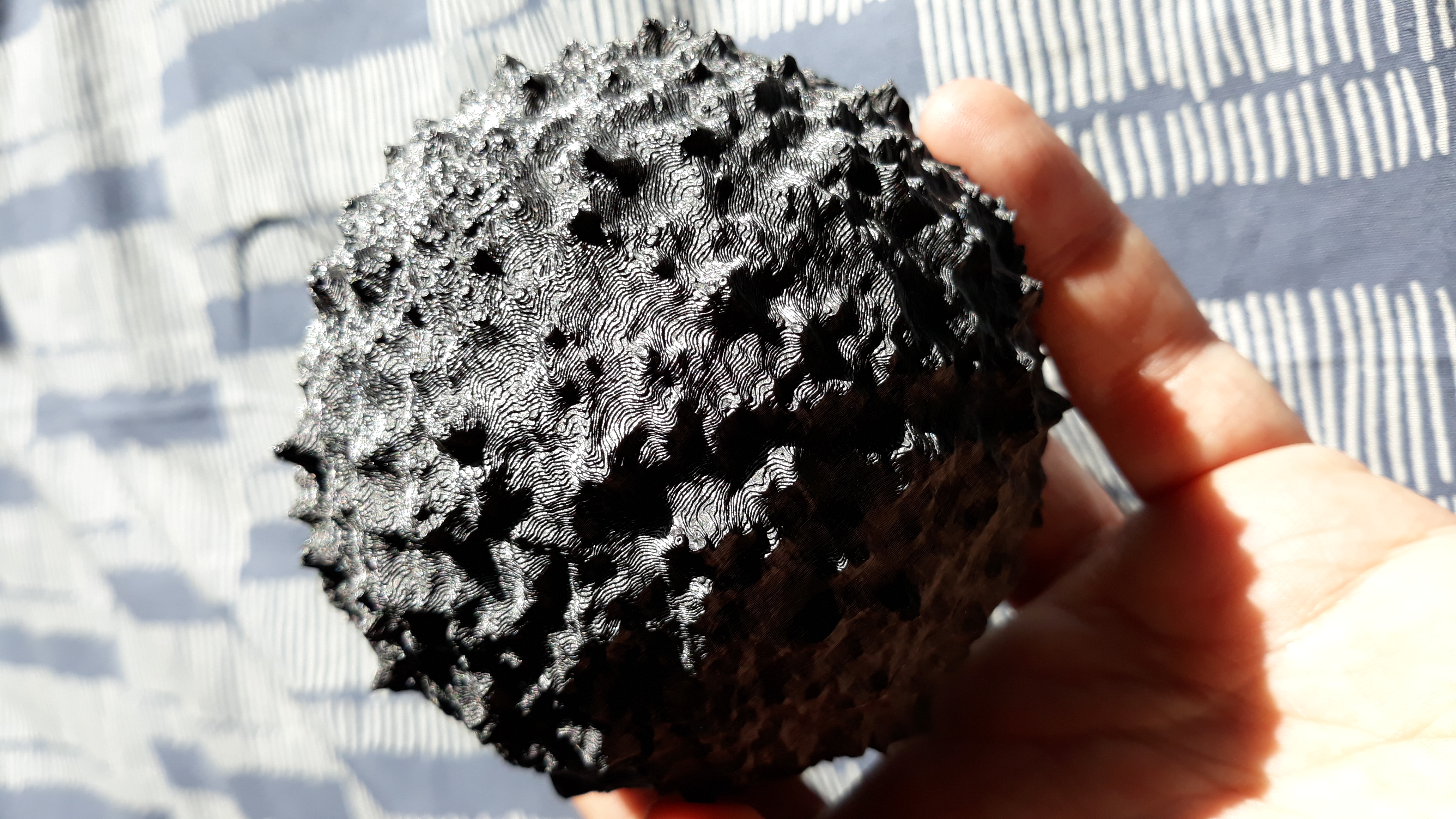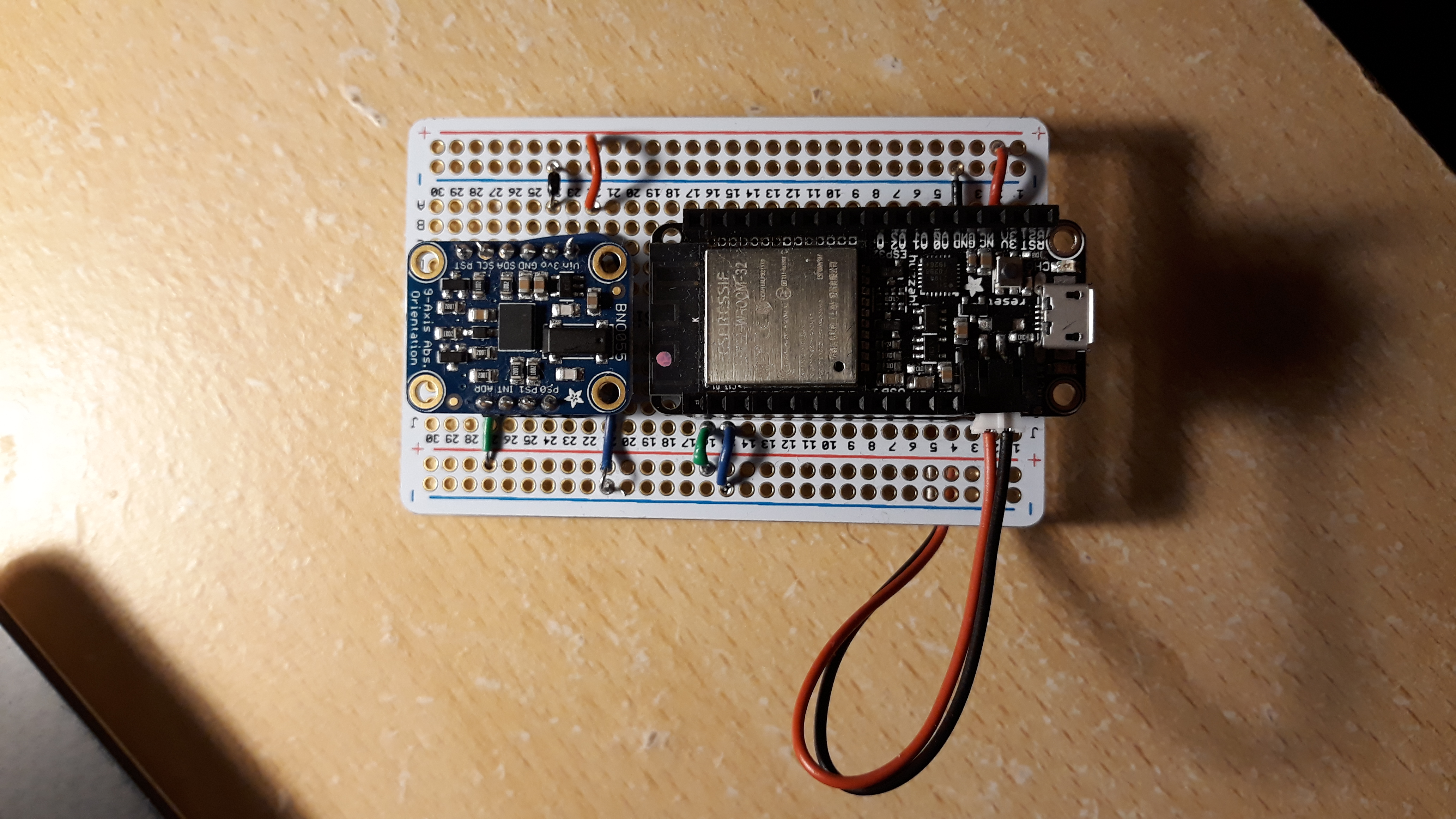Containment
A small game made with openframeoworks and some machine interaction via osc.
produced by: James Lawton
Introduction
This is a short game made with openframeworks and written to be controlled by an OSC device. I started with an idea from another class, built upon it, and made something short and concicse that let me show some more nuanced techinical skills. It's not flashy, but what's there was more challenging than I expected.
Concept and background research
In our Computational Form and Process class I had attempted to 3d print some of the forms we were generating. An example is above. When I held some of these objects in my hand, with their elaborate textures, it felt like holding a small globe and I recalled the old children's hymn sung, "He's got the whole wide world in his hands!" This made me think for a moment about all that power if I had it. What would you do with it? How would you control it? What would be the push back? I began plotting a small game about controling something like a small world. The practicalities of making a small game, along with much of the literature I was reading such as Marshal McLuhan, Juregen Habermas, and Walter Lippmann turned my direction to one decidedly more about trying to maintain some kind of control in world that felt chaotic and out of one's control. The idea was simple: try to keep things under control while everything slowly slips out of your control.
Technical
Whilst I had dreams and made plans for some grand graphics and elaborate effects I was cautioned in our critiques to keep things very simple for a game on this project and instead focus on the interaction and solid basic game play. I did that and it was good advice. While my vision was always a more abstract visual instead of something like a playstation game, the technicalities were a bit harder than I expected. I wanted to do as much as possible on my own without other's code. I largely did that. I used a few addons (and their associated code from class, like openCV and Maximillian code), the arduino code is from another class and listed below, and the only code for game play I copied over was an equation to help with the collision detection. Most everything else was my writing in openframeworks and I'm quite happy about that.
By far the time and techincal troubleshooting was dedicated to the maths and geometry. How does everything work? How does it move? How does it start and stop? How does the collision detection work? How do the parts move together? How do they move seperately? How do they interact? How do the colors and sound work at a basic level? How do the colors and sound interact with the moving parts? It's decidedly more difficult than bouncing a ball off a wall, or just adding ofMap. In the end it was a matter of starting with one piece, getting that working, then adding another piece, then adding a new feature, then fixing what was broken, etc.
The arduino code and other specs for the Huzzah Feather and accelerometer can be found here:
https://gitlab.doc.gold.ac.uk/special-topics-performance/oscimu
Future development
Better graphics and a custom controller! I was testing using an led ring and piezo hooked up to the feather so that I could have a custom controller with corresponding lights and vibrations but it wasn't quite ready yet. It wouldn't be too hard and if I get to display this live, it will definetly be a part of it!
Self evaluation
I'm happy considering I know what went in to it and I also know what's there is fairly tight, tested, and usable. I'm a bit self-conscious it's not the front-page flashy piece that some seem to like but the advice was to get the core stuff working well and not try for too much in a short time. I did that and have a little working game!
References
https://gitlab.doc.gold.ac.uk/special-topics-performance/oscimu
Habermas, Jürgen. The Structural Transformation of the Public Sphere: An Inquiry into a Category of Bourgeois Society. Translated by
Thomas Burger. Reprinted. Cambridge: Polity Press, 2008.
Lippmann, Walter. Public Opinion. New Brunswick, N.J., U.S.A: Transaction Publishers, 1997.
McLuhan, Marshall, and Quentin Fiore. The Medium Is the Massage. London: Penguin, 2008.
































































